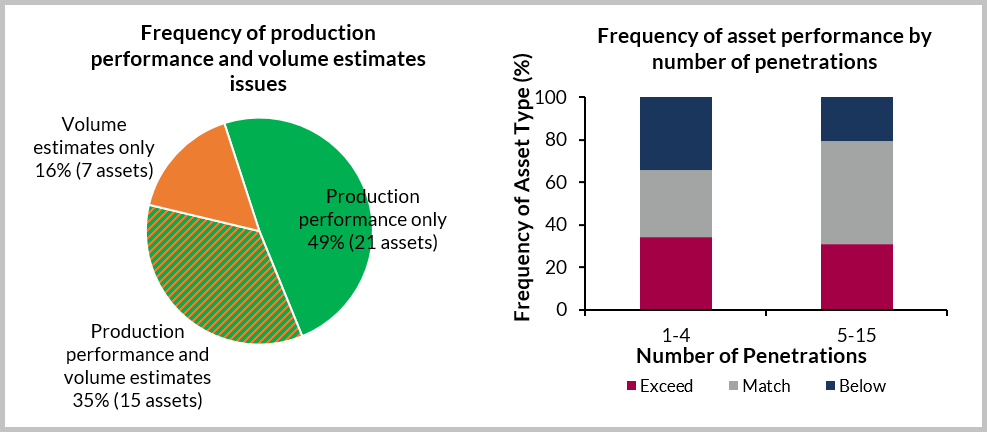Half of oil and gas fields are not producing to expectations when onstream, which is mainly due to unexpected reservoir issues, according to a new study by Westwood Global Energy Group. Lessons learned from this study show that most of the subsurface risks could have been mitigated before the start of a project with more effective appraisal.
Westwood has benchmarked the appraisal programmes of 70 producing fields to understand how production performance is related to the effectiveness of appraisal in reducing subsurface uncertainties. However, the effectiveness of an appraisal programme is only apparent once the field comes on stream, often many years later, when a misunderstanding of the subsurface due to inadequate appraisal can have a catastrophic impact on production performance, reserves and value.
According to Pierrick Rouillard, Project Geoscientist, Global Exploration Research, 43 of the 70 fields in the dataset demonstrated deviations in reserves and/or production of greater than 10% above or below the plan at project sanction – due to unexpected subsurface issues. 50% of the fields were subject to 2P reserves revisions after production started. Average reserves changes were +68% for those requiring increases and -60% for those with decreases.

84% of the assets not matching expectations are reported to have suffered from issues related to reservoir production performance with 51% related to reservoir volume estimates. The most common causes of non-performance were:
- inaccurate prediction of in-place hydrocarbon volumes (49%),
- inaccurate prediction of pressure support due to misdiagnosed connectivity between producers and the water injectors or water-leg (42%),
- different reservoir quality than predicted (35%).
Findings This is an extract from a new research report published in Westwood’s online Wildcat service entitled: ‘Appraisal efficiency – can it be improved?’






























































